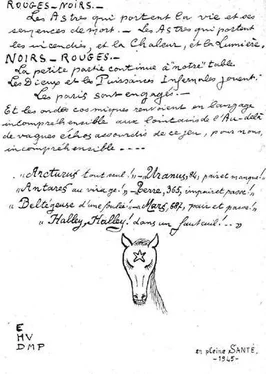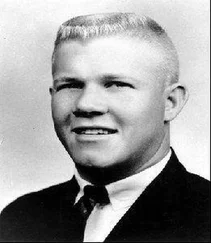After graduating from the prestigious Louis-le-Grand Lycée, Van Bever had studied at university, including a year in law school. He spoke English and knew a smattering of Spanish and Italian. His father, Adolphe Van Bever, had coedited a noted anthology of French poets, and his great-uncle was the painter La Quintinie.
At the time of his arrest, Van Bever had protested that he was not an addict himself, claiming only to have mixed in the environment thanks to his relationship with a prostitute named Jeannette Gaul. At thirty-four years of age, Gaul had a severe addiction to morphine and one of its more potent derivatives, heroin, which had grown in popularity in Paris after expanding beyond its original use as a cough suppressant and cure for a variety of diseases of the “air passages,” ranging from bronchitis to pneumonia. Both morphine and heroin flourished in the demimonde, not least among prostitutes trying to escape hazards of the trade.
After working as a chambermaid with a family in Fontainebleau and later moving on to a number of brothels in Nantes, Clamecy, and Auxerre, Gaul had arrived in Paris just after the Occupation. Her last pimp, Henri “The Jailbird” Baldenweek, had abandoned her and she became an unlicensed streetwalker, the most exposed and dangerous of the main types of prostitution that flourished in the Occupation. In November 1941, not far from La Madeleine, Gaul met Van Bever. After three weeks of regular visits, he asked her to move in with him in his small rented room at 56 rue Piat in the 20th arrondissement. She promised to quit her job. This was two days before Christmas 1941.
Gaul, however, remained an addict. To obtain narcotics, she had exploited the lack of control in the system by obtaining heroin prescriptions from five different doctors. One of them was Marcel Petiot. In the first month and a half of 1942, specifically the last twenty-two days, Petiot had written five prescriptions for her and two more in the name of Van Bever.
On February 19, 1942, Inspectors Dupont and Gautier of the Brigade Mondaine arrested Gaul in her room. Van Bever was also apprehended, and then after being held in custody for almost four weeks, he was released on bail. Discovering Petiot’s name as the physician who prescribed the drugs, the Brigade Mondaine sent this information to Achille Olmi, the juge d’instruction , an investigating magistrate who would decide whether or not the state would prosecute. Olmi summoned Petiot for questioning.
The prescriptions were legal, Petiot argued. He was merely attempting to cure his patient by prescribing progressively smaller doses of the drug. This method was superior to having the addict “go out and steal, or even kill to get it” and, even more, remained “the only known cure.” The state was wrong to suspect him of trafficking. If he had been doing that, Petiot said, he would not have charged a mere 50 francs for a visit and 200 for a substance that would fetch far more on the black market.
As for writing prescriptions to Van Bever, Petiot said that he had been told that he was an addict, and after a physical examination, he had believed it was true. He had, however, become suspicious on their third visit, when Van Bever, claiming to be deaf, answered the doctor’s questions only after his girlfriend whispered in his ear. At this point, Petiot refused to sign any more prescriptions. Both Van Bever and Gaul later acknowledged that this was accurate. Van Bever defended his deception by saying that he had been surprised when his girlfriend claimed that he was a deaf addict and had not known what to do. On the spur of the moment, he had gone along with the scheme.
Van Bever and Gaul later changed their story in certain respects to create just enough confusion that the magistrate felt compelled to indict the patients as well as the physician. The crux of the matter was that Van Bever now claimed that Petiot knew all along that he was no drug addict and that the drugs in his name would go to his lover. If the patients were found guilty, they would go to prison; if Petiot were found guilty, he would, at minimum, lose his medical practice. The trial, which would take place at the Tribunal Correctionnel, was set for May 26, 1942.
Two months before the trial, however, Van Bever disappeared.

VAN Bever was last seen at a café on rue Piat on the morning of March 22. He was having a drink with his friend and fellow coal deliverer, a former Italian hatter named Ugo Papini. During their conversation, Van Bever was called away to meet a tall man in his mid-forties, dark-haired, clean-shaven, and wearing a beret. Not long afterward, Van Bever returned and said that he had to leave with the stranger. It was all very mysterious, Papini acknowledged. Van Bever said only that the man was a friend of Jeannette Gaul, or more exactly, the husband of one of her friends. “Perhaps Jeannette had some debts that they want me to pay,” Van Bever said, promising not to be gone long.
When Van Bever failed to return that night, or show up for work the following day, Papini entered his room, which looked untidy as usual. Strangely, Van Bever, a smoker, had not taken his tobacco with him. Earlier, he had told Papini that he had to mail an urgent letter, but it was still in the room. Papini wrote immediately to Van Bever’s lawyer, Maître Michel Menard, who suggested that he report the missing person to the procureur de la République , or public prosecutor.
On March 26, 1942, Papini filed a report, elaborating on his fears for his friend’s safety. He never suspected Dr. Petiot, nor did the police. At the time, there was a more likely suspect.
Over the past few months, Van Bever had been visiting another prostitute, France Mignot. In November 1941, he had accompanied her to her family’s house in Troyes. As he prepared to have sex with her, Mignot’s brothers and mother attacked. Van Bever was stabbed, beaten, and robbed. After his release from the hospital, he pressed charges. The girl, her mother, and her brothers had all been arrested, with a trial scheduled to begin on Tuesday, March 24, 1942. So when Van Bever suddenly disappeared two days before that, Papini suspected that the culprit was someone in or close to that family.
But then, on March 26, while Petiot’s case was still pending, an unknown man delivered two letters to the office of Jeannette Gaul’s public defender, Maître Françoise Pavie on Boulevard Saint-Germain. Both letters were purportedly written by Van Bever. The first one, addressed to his attorney, Maître Menard, informed him that his services were no longer needed—an odd way to end a business relationship with an old family friend. The second letter, addressed to Jeannette Gaul, was even more peculiar.
“It is no longer necessary to tell any stories,” the writer began. He then claimed to be a drug addict who required one to four shots a day and admonished her to tell the truth. There was little here about Van Bever’s lover, but a great deal instead about his physician:
You know that Dr. Petiot examined me in the next room. The proof is that he saw the scabs of my hypos. If I made false statements, it was to get temporary freedom to make a new life for myself somewhere else. We will meet on your release to try to make a new life together, far from all filth. I kiss you warmly
.
The letter was signed “Jean Marc van Bever.”
Why would Van Bever go to the trouble of writing to his lover only to spend two-thirds of his letter confessing to an addiction that either he did not have or that, if he did, would not be news, and then proceed to make points that corroborated Petiot’s position? Why, too, in a letter to his lover, was he signing his full name? Van Bever’s attorney, for one, doubted that these letters were written by his client.
Читать дальше













